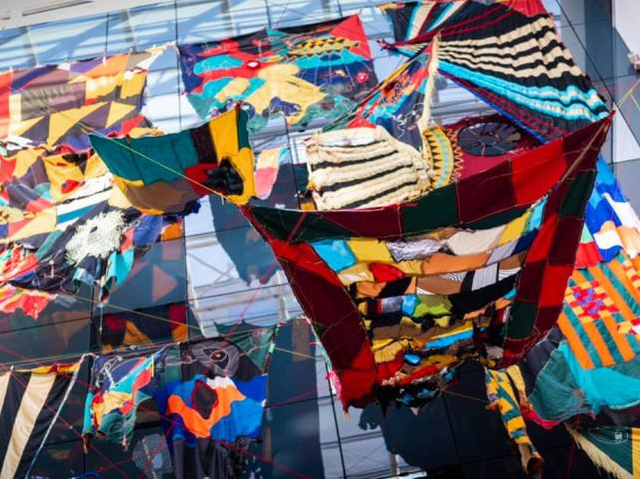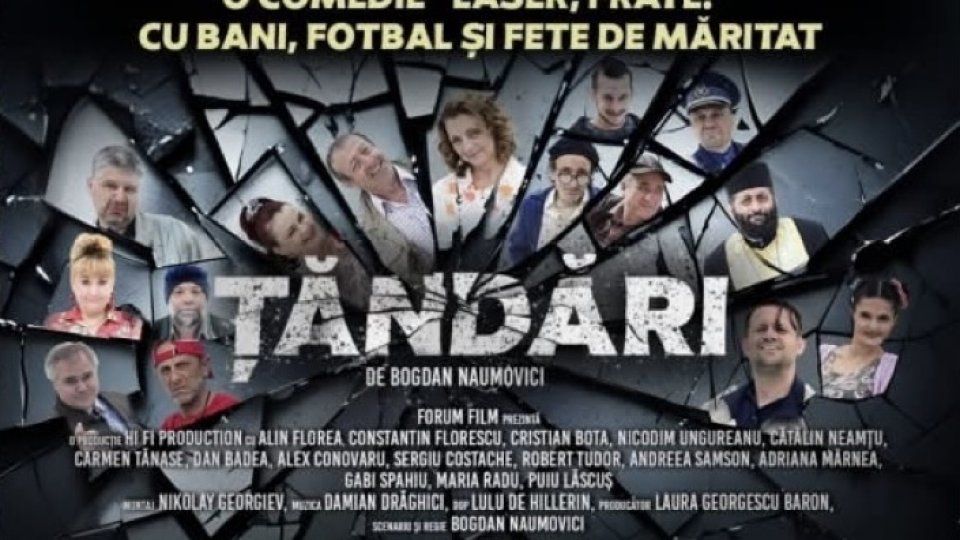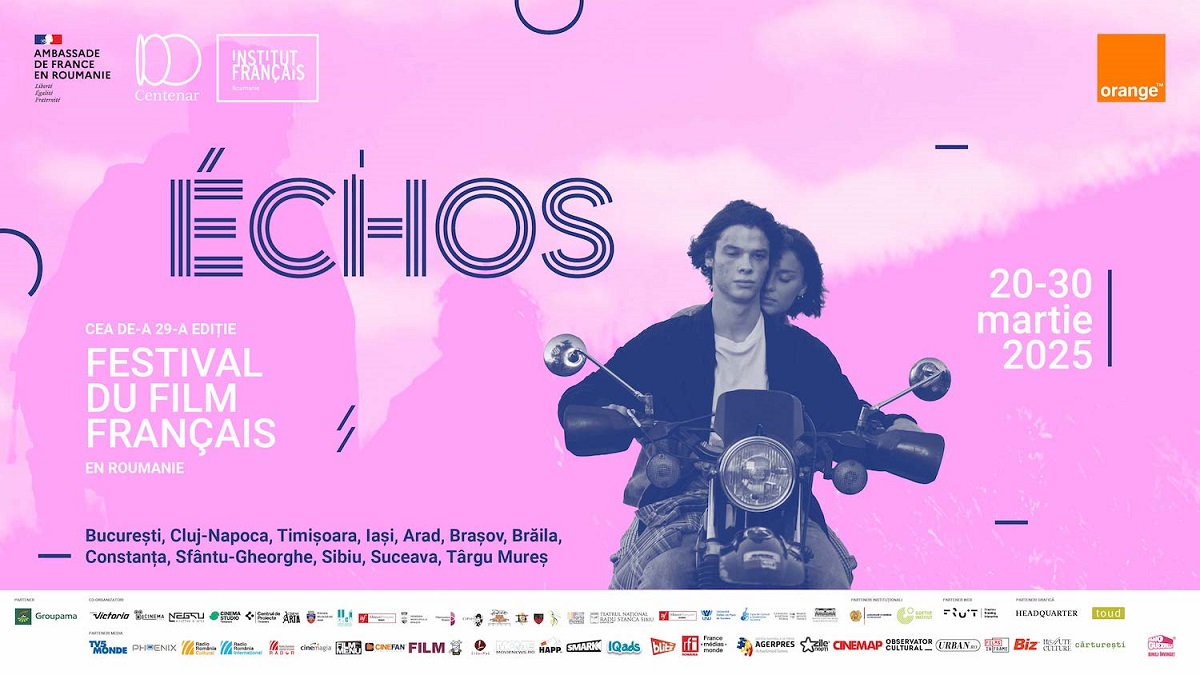The Art Safari 2020 retrospective exhibition
Fine arts in the city, classical and modern

Ion Puican, 05.12.2020, 14:00
The month of September this year saw the 7th
edition taking place, of an eagerly-awaited event: the Bucharest Art Pavilion -
Art Safari. The event draw to a close two months ago, and the other day we sat
down and spoke to the Art Safari director, Ioana Ciocan. Ioana had a look back
at the event, offering us several conclusions.
As an absolute first in the history
of the event, the Bucharest Art Pavilion – Art Safari was held on two separate
premises: the Victoria Tower, an impressive building located on Victoria Road,
at the heart of Bucharest, and in the AFI Cotroceni Mall, which was an
extremely surprising space. We picked AFI Cotroceni because we thought it was
easier, it was more accessible for us to take art particularly where people
are. If people are in the mall, then the decision we took was quite natural,
that of having an art pavilion in the mall. So we built a satellite there, with
all sorts of artistic, interactive installations, made for the entire family,
where, of course, access was free. Another interesting thing about Art Safari
was that it could also be visited at night. So, night after night, from
September 11 and all through to September 27, small groups of visitors enjoyed
guided tours as well as musical performances. This year, given the trying circumstances
we’ve been through, we had to take into account a couple of measures that are
part of the new normality already: social distancing, wearing the ear-loop mask
and there was something else, something very important, access to Art Safari
was granted to small groups of people. Practically, for the Victoria Tower’s
11,000 square meters surface area, we allowed no more than 175 people to visit Art
Safari. We complied with the recommendation we got from the Ministry of Culture
and the Healthcare Ministry as we wanted to make sure the visits to the Art
Safari Museums were completely safe.
Ioana Ciocan gave us detailed info on the two
exhibitions that were part of Art Safari, which enjoyed the greatest success with
the visitors – the Sabin Balasa Pavilion and the Gheorghe Petrascu Pavilion.
Ioana Ciocan:
After the lockdown we had to comply
with earlier this year, we realized how much we missed cultural events. We were
happy because, under these very difficult circumstances, we were able to mount
the 7th edition of Art Safari. The pavilion bearing the name of Sabin Balasa, a contemporary painter who was
famous before but also after the anticommunist revolution, was laid out in the
entire surface area of a floor of the building. Each of Sabin Balasa’s
canvasses was some sort of incursion into a quite uncanny cosmic universe,
peopled with feminine and masculine beings captured in initiatic journeys of
various kinds. We got a loan from Romania’s Chamber of Deputies, a valuable
one, which was also a one-of-a kind loan, eight of Sabin Balasa’s big-size canvasses
were offered on loan by them. We very much wanted Ceausescu’s and his wife’s
portraits to be included in Art Safari, we couldn’t get them, unfortunately, it
would have been relevant for visitors to know it was not only a blue cosmic
universe Sabin Balasa painted, but also propaganda works. On the first floor of
the building in Victoria Road, the museum pavilion was entirely dedicated to
Gheorghe Petrascu, one of Romanian fine art’s most popular painters, a great
master, whose works were last put together in an exhibition in 1972.
Art Safari came up with a surprise exhibition for the
Eastern-European space.
Ioana Ciocan:
In 2020, the International Pavilion
was dedicated to a form of rebel art brought over from the US: Guerilla Girls.
The group of feminists was founded in New York in 1985, while for its
representation in Bucharest, Guerilla Girls curated a historic exhibition, an
exhibition comprising the fine art group’s most famous and most relevant works,
dated 1985, but also works form the 1990s and the year 2000. The group was set
up as a form of protest against gender differences in the museums across USA,
and not only there, this year at Romania’s National Art Museum we saw an
exhibition including all-male works. So the 1985 Guerilla Girls protest has not
reached Bucharest yet, that’s why we were happy we had the privilege to host that
historic group as an absolute first, not only in Romania, but in this part of
Europe as well.
The visitors’ reaction to the interactive exhibition
offer as well as to Art Safari’s offer for the little ones was extraordinary,
the art-loving kids, that is.
Ioana Ciocan:
The ‘Bucharest School’ pavilion,
curated by Silvia Rogozea, sought to offer a complete picture of the last 30
years of Bucharest fine art. For their works to be selected for the exhibition,
their authors needn’t have been Bucharesters, born and bred, or educated in
Bucharest, but at a crucial point in their lives, the artists need to have had
a close connection with Bucharest. It was an eclectic exhibition, very popular
with the visitors, photographs of the exhibition were taken on a large scale. An
Art Safari hashtag on the Instagram gives us access to the most successful
angles of the ‘Bucharest School’ exhibition. The exhibition also had an audio
installation, jointly made with Ana Banica, an artist the visitors loved very
much, especially the younger public. The Children’s pavilion was something
unique in Art safari. We asked the little ones to send us works they made
during the lockdown we had earlier this year. We found it absolutely
fascinating to receive their works, on paper, canvas, collages, photographs,
magazine clips – for the children, it was a universe which took shape at a time
which was very difficult for them. But it was all the more delighting for us to
see the little the ones coming at Art Safari and seeing their works on display
in a museum as an absolute first. So we would like to continue with the
children’s pavilion in the 2021 edition as well.
Ioana Ciocan:
The team’s tremendous effort to mount
Art Safari against the backdrop of the pandemic was warmly rewarded by the
visitors’ enthusiasm. We were once again happy when we saw people queuing up
for art, just as it happens in all renowned international exhibitions. Bucharesters,
and not only them, were queuing up for Art Safari just as they do when
they visit the great international museums. So we were happy to have been able
to offer lovers of art a contemporary visiting experience, perfectly adapted to
the times we live in. It was a collection edition, indeed, and I should like to
take this opportunity and invite you to be part of Art Safari. This year we had
more than 80 youngsters who opted for doing volunteer work in the field of art,
with Art Safari, it was a team of volunteer high-school students from
high-schools in Bucharest, they are definitely a source of inspiration for the
younger generations. So we invite you to visit Art Safari, but also to do
volunteer work as part of such a great cultural project.
(Translation by Eugen Nasta)





























